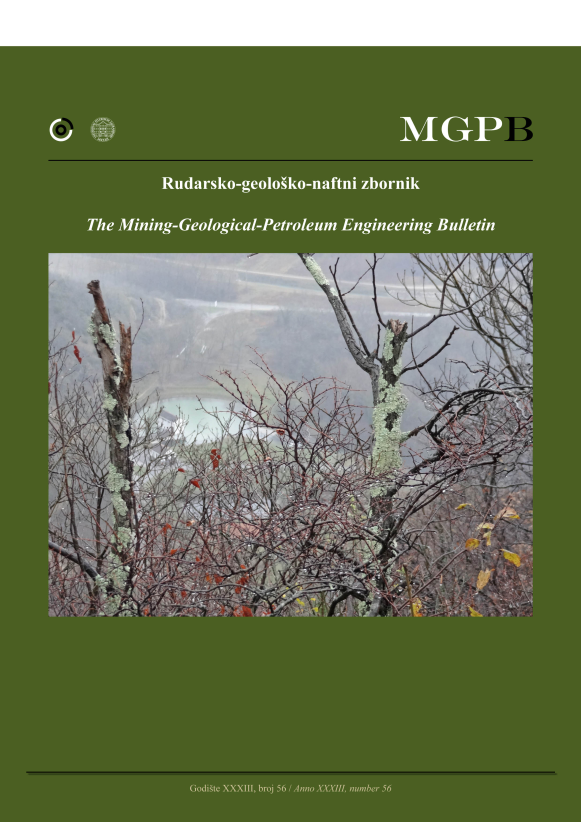Maximize mining exploitation efficiency of the quarry: a case study
DOI:
https://doi.org/10.17794/rgn.2021.5.3Keywords:
Dimension stone, Financial risk, Discontinuity network, Exploitation efficiency, Rock block’s geometryAbstract
Nowadays, the dimension stone industry performs a crucial role in the world economy. Accordingly, dimension stone quarries' importance grows due to their different applications in various construction, building, and decorative industries. Some issues threaten this industry and provide a financial risk that should be taken into account to make the risk least for investment. The presence of discontinuities in the rock mass has a key function as far as it concerns the overall quality of in situ rock blocks. It impacts the feasibility of dimension stone quarries and overall mine exploitation efficiency. Therefore it is recommended to survey discontinuities and rock blocks and estimate the average geometry of a rock block, including the shape and size, before mining the benches to maximize mining exploitation efficiency and minimize waste ore production. This investigation aims to survey the discontinuities of the limestone quarry mine located in Josheghan, Iran, to determine and calculate rock blocks' suitable geometry and extraction’s direction for active mine benches. For this purpose, the Scanline method was applied to survey discontinuities in seven active benches. 3DEC software was used to indicate discontinuities and model the rock blocks for all active benches. It was concluded that the benches' cutting line make a 13.14 degree with the discontinuities main's direction. The result of this study proved that by changing the direction of mining and extraction for active mine benches, the unnecessary waste production would decrease. The production rate with the recommended extraction direction will increase by about 1.13% compared to the current extraction direction, which makes 13.14 degrees with the discontinuities main's direction. Currently, bench seven recorded The Minimum production rate, which is 97.60; by applying the new extraction's direction, it is predicted that this bench will achieve a 99.83 production rate. Consequently, it is concluded by improving the production rate, exploitation efficiency would increase considerably.Downloads
Published
How to Cite
Issue
Section
License
Copyright (c) 2021 authors and journal

This work is licensed under a Creative Commons Attribution 4.0 International License.
Creative Commons-BY
Authors who publish with this journal agree to the following terms:
In agreeing this form, you certify that:
- You read the ethical codex of the RGN zbornik available at journal web.
- You submitted work is your original work, and has not previously been published and does not include any form of plagiarism.
- You own copyright in the submitted work, and are therefore permitted to assign the licence to publish to RGN zbornik.
- Your submitted work contains no violation of any existing copyright or other third party right or any material of an obscene, libellous or otherwise unlawful nature.
- You have obtained permission for and acknowledged the source of any illustrations, diagrams or other material included in the work of which you are not the copyright owner.
- You have taken due care to ensure the accuracy of the work, and that, to the best of your knowledge, there are no false statements made within it.
- All co-authors of this submitted work are aware of, and in agreement with, the terms of this licence and that the submitted manuscript has been approved by these authors.
Publication licence
You retain copyright in your submitted work, according to journal license policy (CC-BY). By signing this form you agree that RGN zbornik may publish it under the publication licence. In summary the licence allows the following:
Anyone is free:
- To copy, distribute, display, and perform the work.
- To make derivative works.
Under the following conditions:
- The original author must always be given credit.
- The work may not be used for commercial purposes.
- If the work is altered, transformed, or built upon, the resulting work may only be distributed under a licence identical to this one.
Exceptions to the licence
In addition to publishing the work printed under the above licence, RGN zbornik will also enable the work to be visible online.
The journal editorial can change the licence rules anytime but it cannot retroactively restrict author(s) rights.


